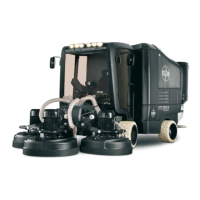official representation of:
DPX01-Standard Vorlage Englisch.doc
Seite 2 von 8
S
cope of Supply
This proposal applies to the supply of the DPX™ Catalysed Soot Filter for use on
…………………. (Euro ……) Engines powered by Diesel Fuel with a maximum content of
350 ppm Sulphur level. The target is to reach EURO 3 standards in terms of Particulate
Matter (PM), CO & HC.
2 Product Description
For all Euro 2 class engines the DPX™ Catalysed Soot Filter System will comprise of a
single ceramic “Wall Flow” Particulate Filter that is coated with a combination of a
highly active base metal washcoat and a specially formulated “Precious Metal”
coating. Referred to as DPX1.
For all Euro 0/1 class engines the DPX™ Catalysed Soot Filter System will comprise of a
“Flow Through” ceramic Pre-Filter substrate that is coated with a highly active base
metal washcoat, sited upstream of the Wall Flow Particulate Filter as described above.
Referred to as DPX2
The “Wall Flow” Particulate Filter, and “Flow Through” Pre-Filter (where applicable) will
be contained within a stainless steel outer casing. This patented system is designed to
dramatically reduce the levels of Carbon Monoxides (CO), Hydrocarbons (HC), and
Particulate Matter (PM) present within the exhaust output of a diesel engine by use of an
oxidation process.
The DPX™ Catalysed Soot Filter has excellent sound attenuation characteristics for the
removal of both high and low frequencies, and hence requires no further silencing.
Therefore the existing silencer should be removed and replaced directly with the
Catalysed Soot Filter System.
3 Operation
This system has been specifically designed to operate where the “Duty Cycle” of the
diesel engine is operating at low temperatures (below 300°C)
To enable the System to function most effectively, it should be used in conjunction with
the “Ultra Low Sulphur” Diesel Fuel (S=0.005%, NFE 590). The system can also be used on
engines running with Standard Diesel Fuels having a sulphur content not exceeding 350
ppm (NF EN 590), with an increase in sulphate emissions only if the exhaust gas
temperature exceeds 350°C.

